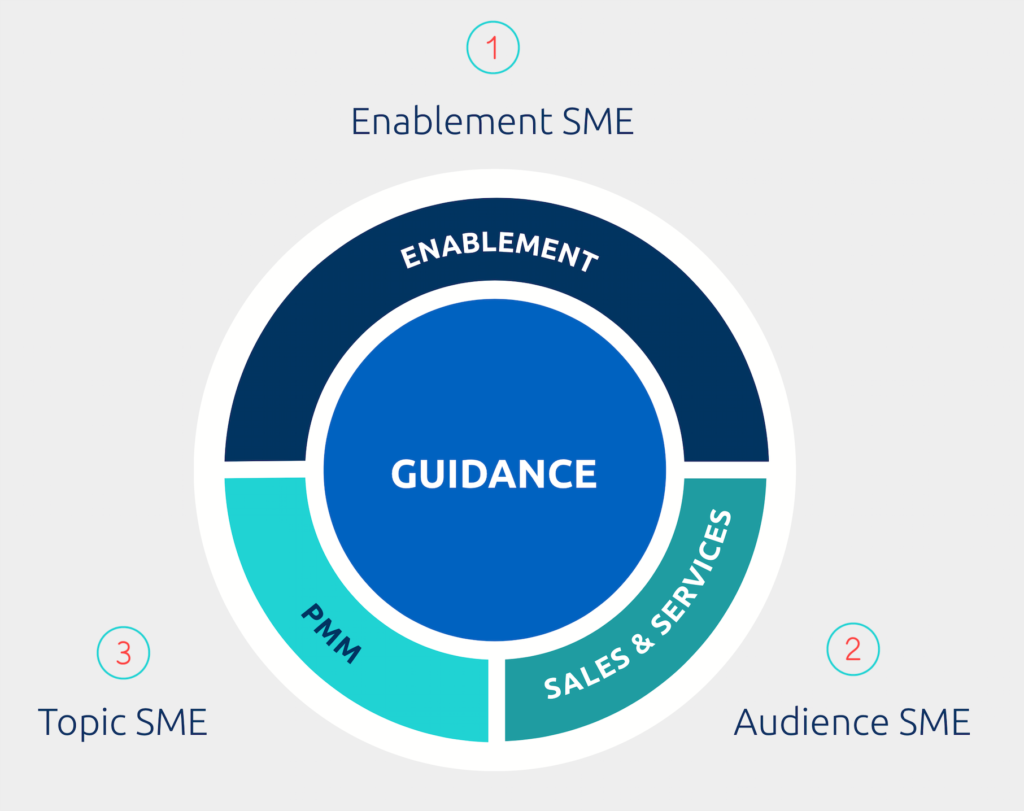Asking questions is a fundamental part of how we learn. Questions move the world forward by forcing us to pause, think, and formulate or find an answer. But it’s not just about asking questions — but rather asking the right questions to find the right answers.
Our work helping hundreds of customers enable their revenue teams to execute strategy has reinforced my perspective that to successfully land strategic plays that drive business outcomes, you must first ask the right questions.
Take, for instance, the task of creating a play to help your account management (AM) team increase partner license sales. How do you ensure the play lands with your AM team and helps drive this new business initiative? You have to start by asking what I call the Six Foundational Questions:
- Why?
- Who is my audience?
- Who is my customer?
- Who are my play builders?
- When?
- What’s in it for my audience?
Answering these questions ensures that any play you create resonates with your internal audience and drives positive business outcomes. Read on to understand each question and see an example answer based on the partner licenses scenario.
The Six Foundational Questions
WHY
When trying to land a new or existing business strategy with your team, you must start with the most important question — why. What is the specific business rationale for this play? What business metrics will this play impact? You should think through whether your metrics are strategic or foundational; if they are neither, then you should consider whether the play is worth doing in the first place.
Answer: Increase partner license sales and expansion ARR
WHO (Audience)
The second question you’ll want to ask is, “Who is your internal audience that will execute the play?” Understanding who you’re creating the content for helps to make sure the content within the play connects with its intended audience. A doctor wouldn’t give a prescription without understanding their patient’s ailment, and neither should you build a play without knowing your audience and their motivations.
Answer: Account Management
WHO (Customer)
Once you know who your audience is and why they need this play, you need to ask who your customer is. Which persona is this play targeting? This should be anchored in characteristics of the person or the company; it’s not about their state of mind, but rather about who they are. Include key details like industry vertical or key company initiatives.
Answer: Channel/Partner Enablement Leader
WHO (Builders)
Who are your internal experts who will help build the play? Builders of the play are just as important as the internal audience who will utilise it. Building a play relies on three different subject matter experts (SMEs). Each SME should be one person.
- Topic SME – Often product or content marketing
- Enablement SME – Most likely the enablement team member supporting the internal audience the play is designed for
- Audience SME – Frequently the sales or, in some cases, the services team member who is most knowledgeable about the target customer

Answer:
Topic SME = Partner Marketing Manager
Audience SME = Partner Sales Manager
Enablement SME = Account Management Enablement Lead
WHEN
What are the scenarios in which your internal audience will run the play? The “when” is often the situation in which you have yet to achieve the play’s goal, but are trying to move the prospect or customer to the next step.
Answer: An account review of channel partners in the finance industry has uncovered a large group with renewals less than six months away. Your play will be used to guide your account management team through engaging the right partner contacts for renewal and potential expansion.
WHAT’S IN IT FOR ME
If you want to receive buy-in, start by asking about what goal this play helps your internal audience achieve. As you build the play, ensure that the reward is very clear and speaks directly to your audience, which in turn increases your chance of adoption and usage.
Answer: Achieve or exceed your quota by quickly renewing and potentially expanding our partner contracts. Implementing the Six Foundational Questions establishes cross-functional clarity and ensures the guidance you provide your revenue teams is actionable and effective. Without this comprehensive guidance, your teams are shooting from the hip without any ammunition.
To learn how the Guidance Framework can help turn your business strategies into action, download our new eBook here.




